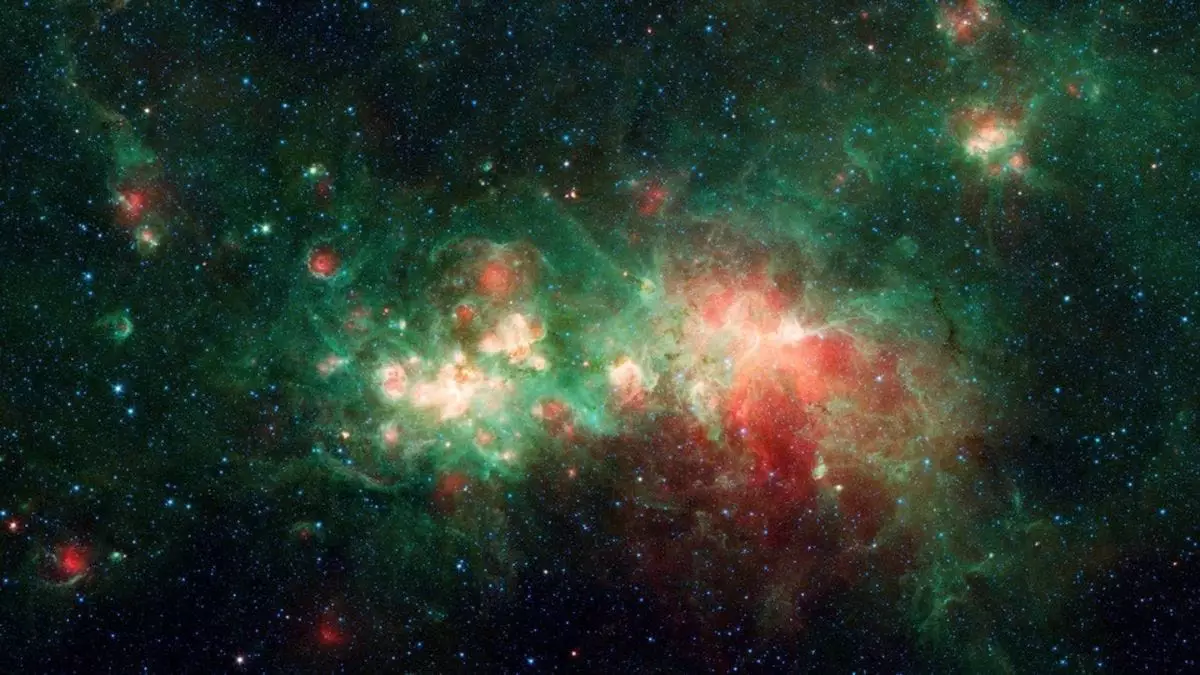Recent advancements in astrophysics have revealed that our universe’s developmental narrative is more intricate than earlier theories suggested. A groundbreaking study orchestrated by Joshua Kim and Mathew Madhavacheril from the University of Pennsylvania, in collaboration with experts from the Lawrence Berkeley National Laboratory, utilized data from two pivotal astronomical observations: the Atacama Cosmology Telescope (ACT) and the Dark Energy Spectroscopic Instrument (DESI). Their research, published in the Journal of Cosmology and Astroparticle Physics and on the preprint platform arXiv, underscores a nuanced deviation in the anticipated arrangement of cosmic structures that appeared in the past four billion years.
The foundation of this study lies in the fusion of ACT’s cosmic microwave background (CMB) lensing data with DESI’s extensive catalog of luminous red galaxies (LRGs). The ACT translates the faint light emitted just 380,000 years after the Big Bang into insights about the early universe. In contrast, DESI offers a modern-day, three-dimensional mapping of galaxy distributions, which enables researchers to delve into how cosmic structures evolved over time. By integrating these datasets, the team aimed to construct a robust framework for understanding cosmic evolution that captures the universe’s progression comprehensively.
An essential finding of the analysis is the revelation concerning the Sigma 8 (σ8) metric— a vital indicator of density fluctuations in the cosmos. The study indicates that the σ8 value appears lower than anticipated, raising questions about the conventional models that govern our understanding of cosmic structure formation. This deviation hints at the possibility that matter distribution may not align perfectly with predictions derived from early-universe conditions, sparking intrigue among researchers and encouraging further exploration.
Mathew Madhavacheril, an assistant professor at the University of Pennsylvania, remarked on this fascinating anomaly in an official press release. While the primary findings are largely consistent with Einstein’s gravitational theories, the slight discrepancy raises compelling questions that warrant deeper investigation. One promising hypothesis suggests that dark energy—the enigmatic force propelling the universe’s accelerated expansion—might be influencing cosmic structure formation in unforeseen ways. This speculation indicates an underlying complexity in cosmic evolution that could reshape our foundational cosmological models.
The horizon looks promising with the anticipated deployment of cutting-edge telescopes, such as the Simons Observatory, poised to enhance our understanding of these pivotal cosmic phenomena. Researchers are committed to gathering more data to discern whether the observed discrepancies are mere anomalies or indicative of more profound mechanisms that existing cosmological models do not yet address.
The evolving picture of the universe, illuminated by recent discoveries, emphasizes the significance of empirical observation in refining our cosmic theories. This research not only challenges established paradigms but also amplifies the allure of cosmic exploration, compelling scientists to continuously question and investigate the intricate dance of matter and energy that shapes our reality.


Leave a Reply